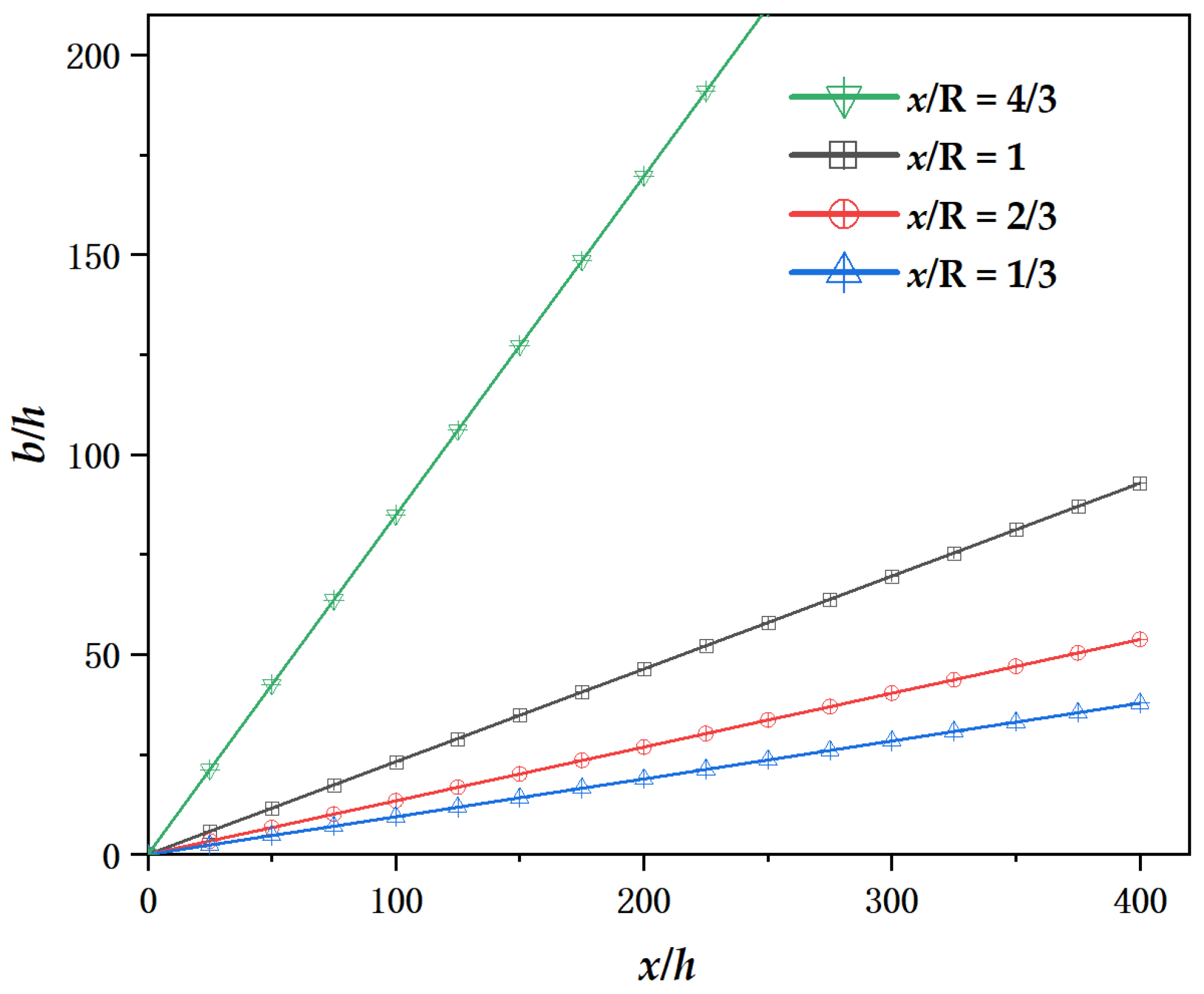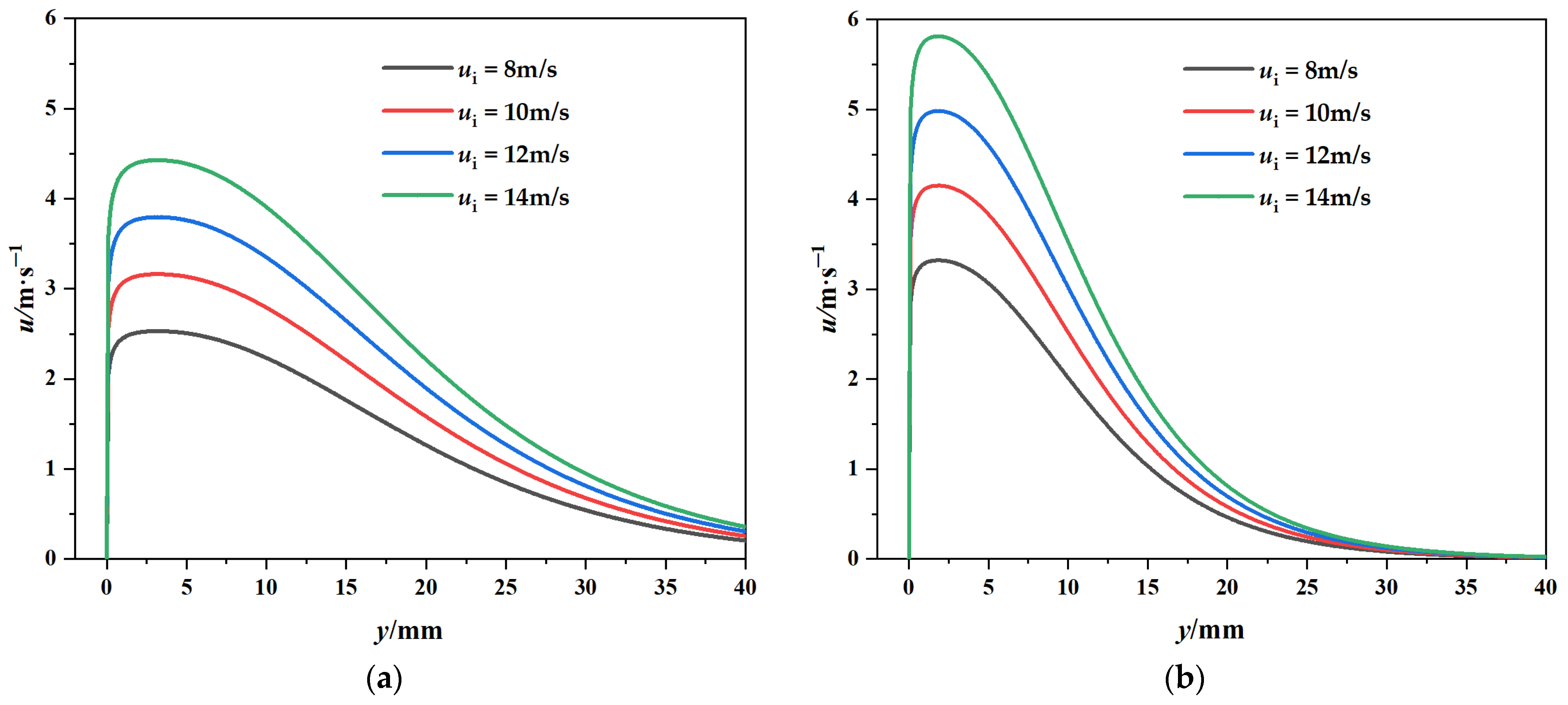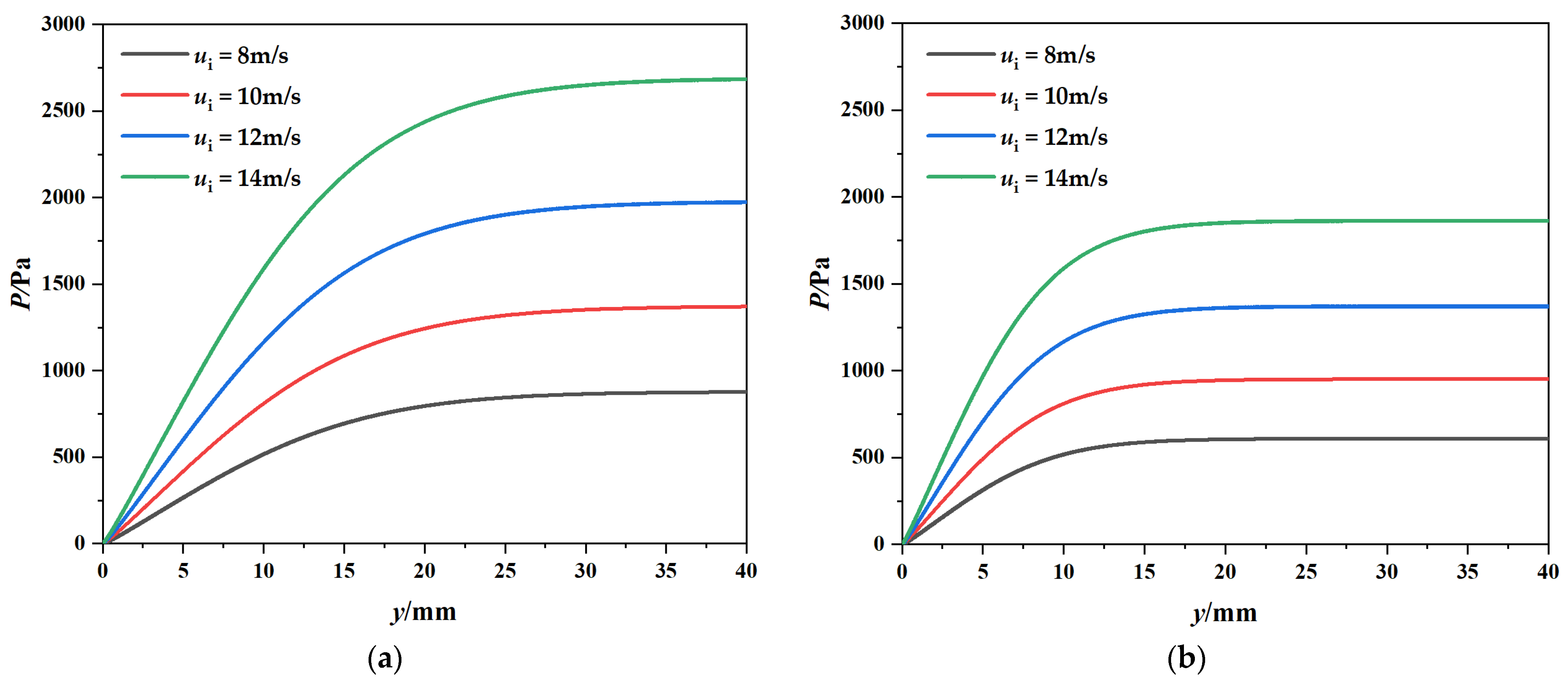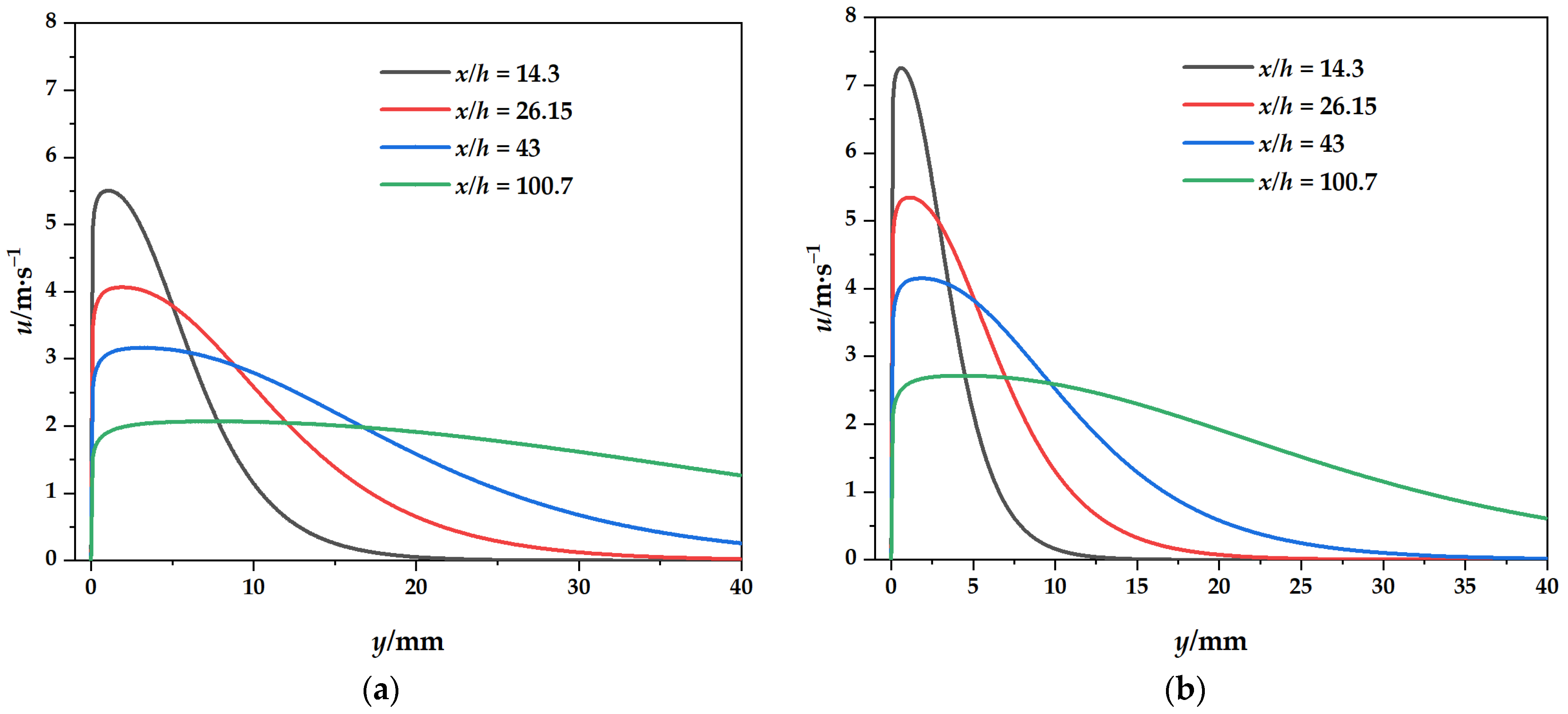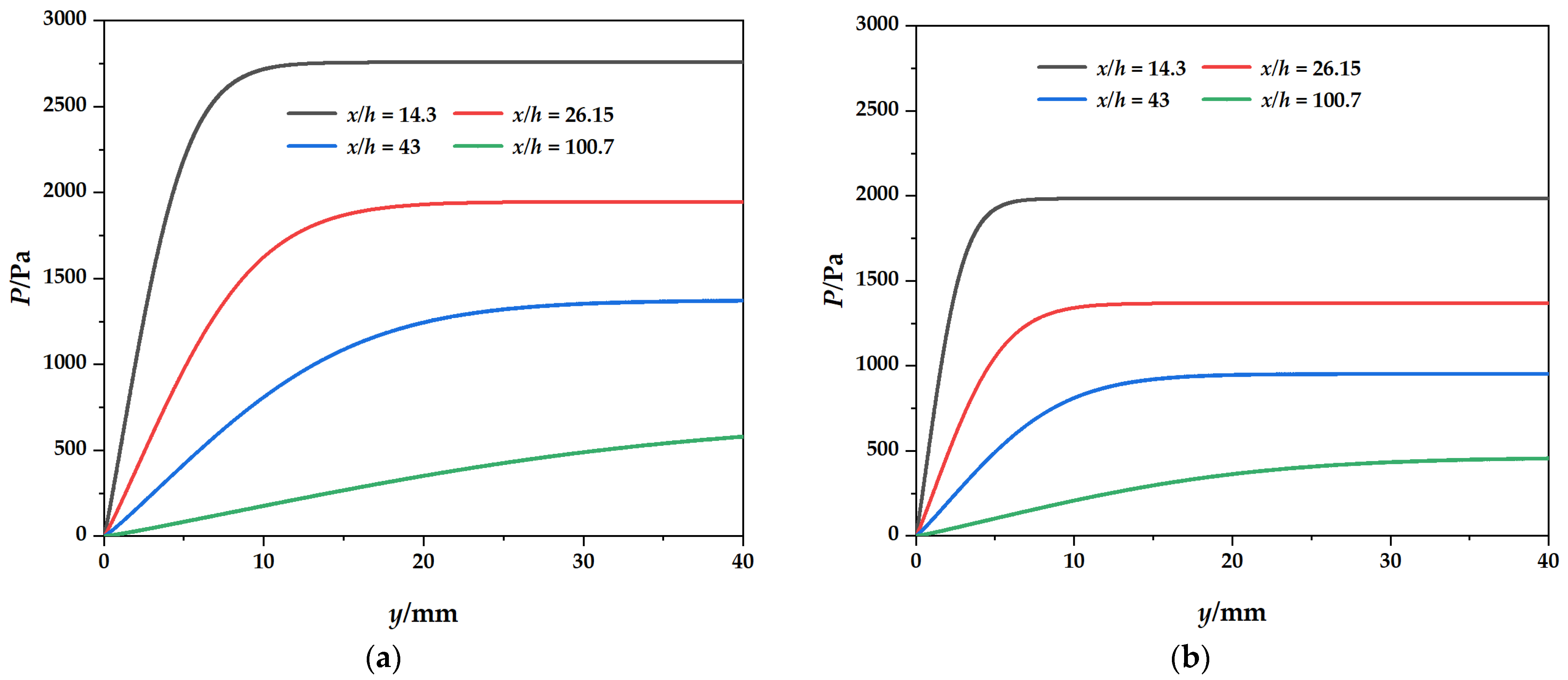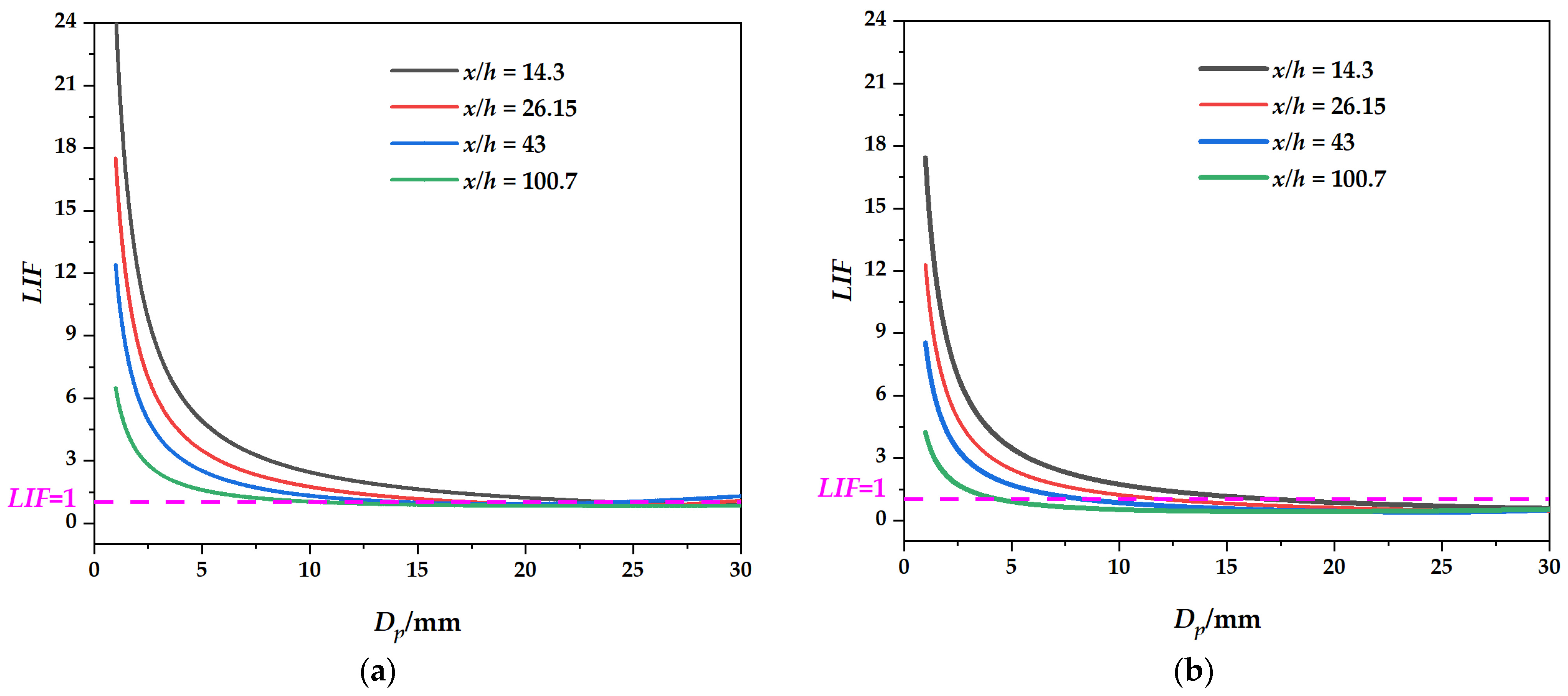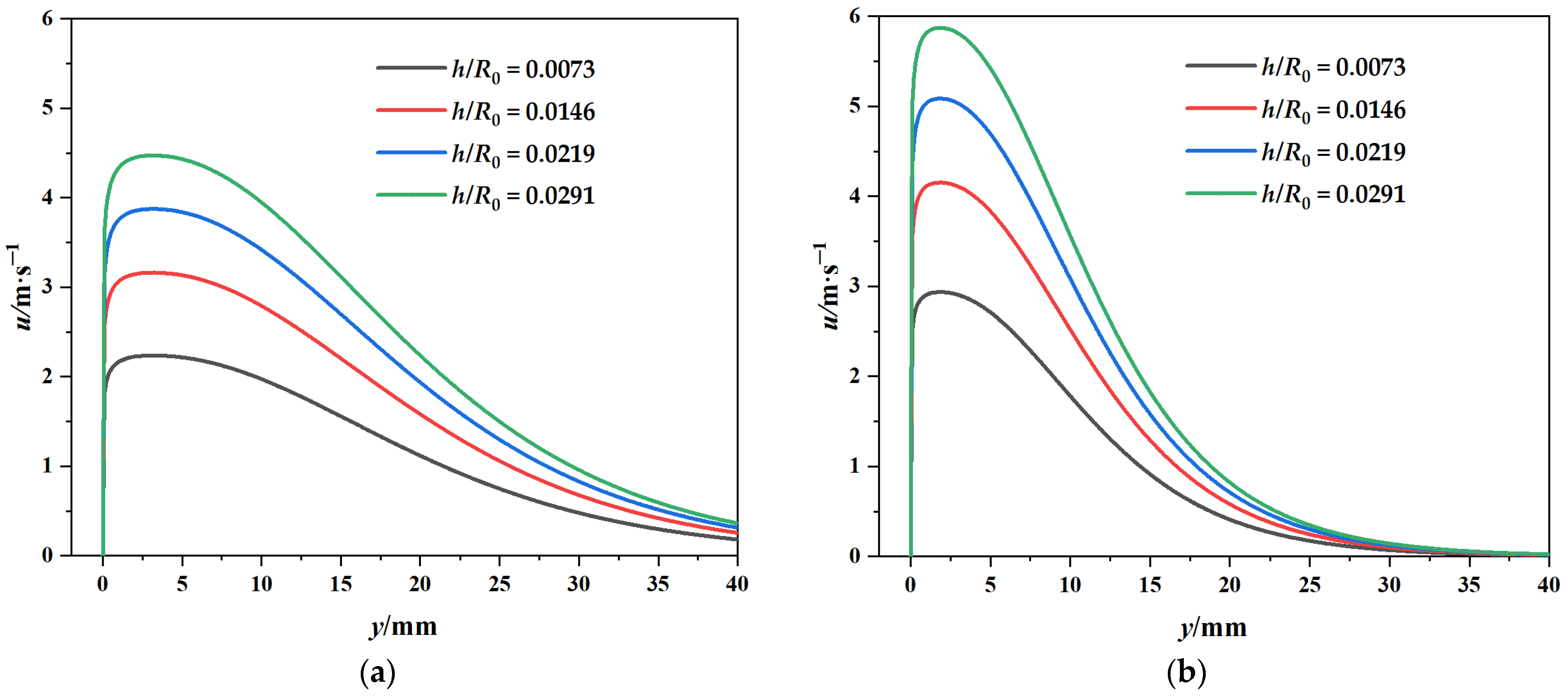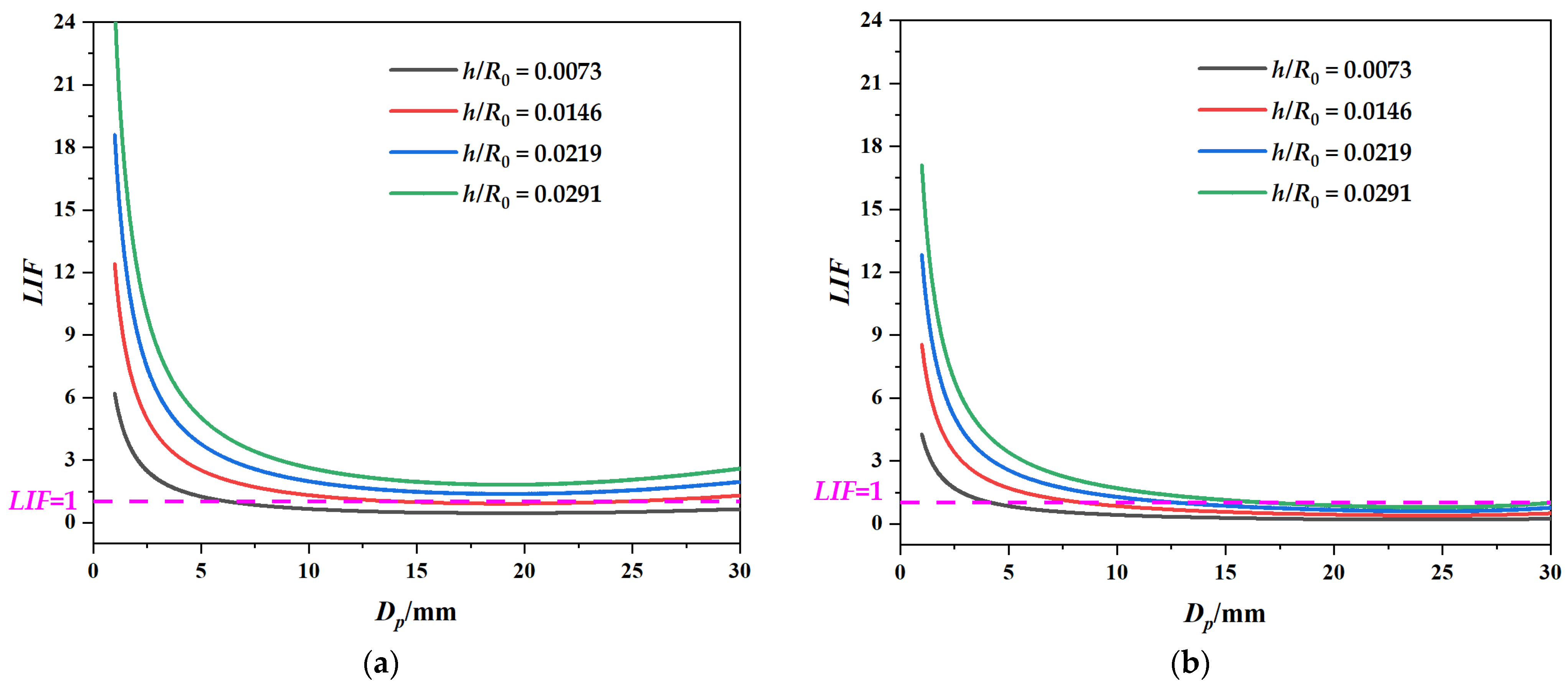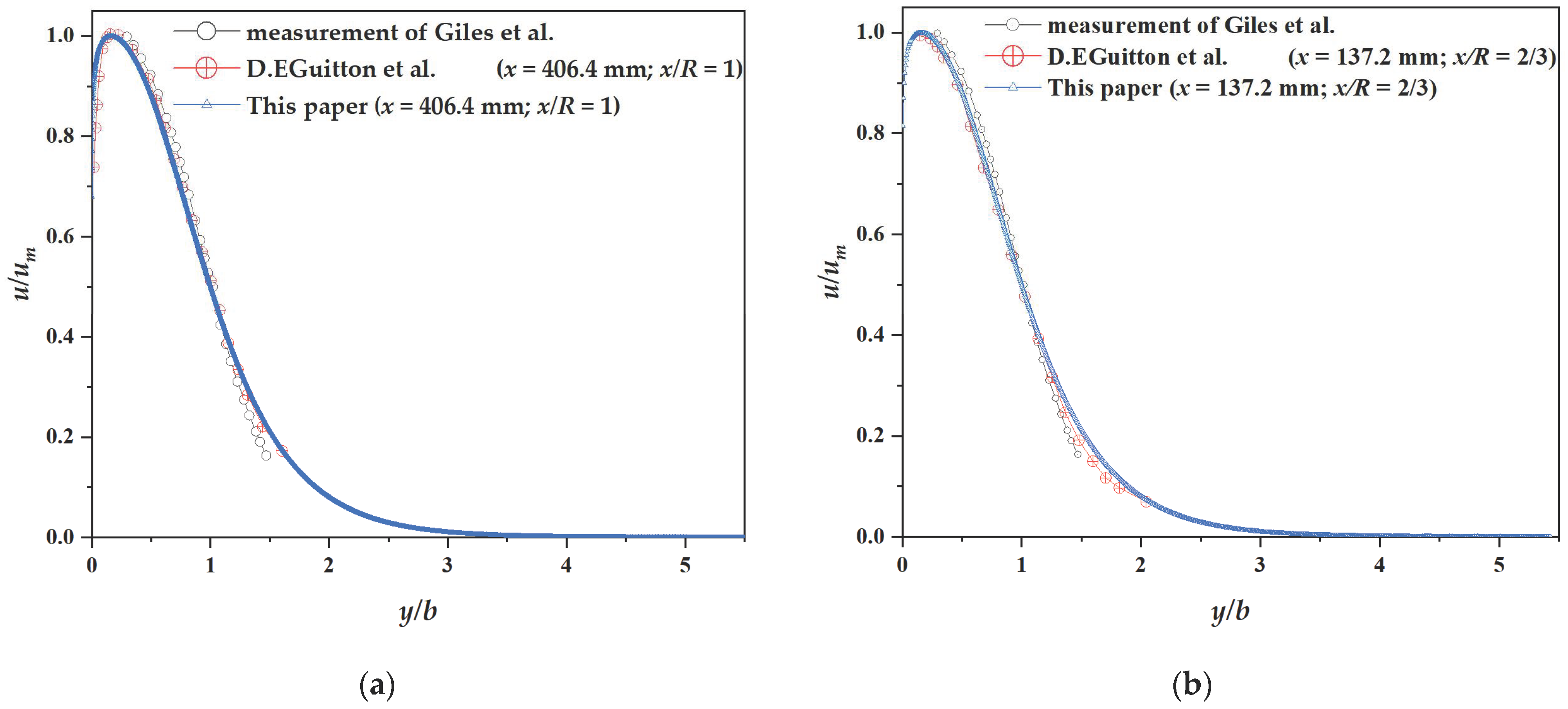1. Introduction
Polymetallic nodules, a key potential candidate to replace severely depleted resources in land, are half-buried in the superficial layer of marine sediment at a depth of 4000–6000 m [
1,
2]. Commercial exploitation of these granular nodules can now begin, owing to improvement in the technology of mining systems, which has made them more cost-effective and eco-friendly [
2,
3]. In a typical mining system, mining vehicles deploy on the seabed and gather the ores with their professionally-designed collector, after which the riser lifts the nodules to the mining support station [
4].
The collectors are mainly mechanical or hydraulic. The mechanical type undercuts the seabed and dislocates the nodules with a rake-like front, and then lifts the ore through a steep incline belt conveyor [
5]. Mechanical collectors, with complicated structure assembled together, can hardly achieve operational reliability in long-term work under the sea. With a minimized mechanical driving unit, the hydraulic collectors float and capture the manganese nodules through low pressure from fluid mechanics, which currently have reasonable collection efficiency and have controllable eco-environment effects [
6].
Hydraulic collectors have usually worked by sucking up sediment through aspirating pumps, or by pushing it through jet pumps [
7,
8]. However, the first generation of hydraulic collectors shows unsatisfactory performance. The reason can be summarized thus: before transporting the nodules to the vehicle through the pipes, one must first separate and move the nodules from the seabed by forming an appropriate flow field over the nodules.
The improved hydraulic collecting methods can be divided into two types [
9]: the double-jet method, and the Coandă effect-based method. In the double-jet method, two-jet impinges inclined on the seabed, forming radial wall jets [
7]. Their collision and interaction form a stagnation line and upwash region. The nodules are made to float by the spreading of the impinging jet and are lifted up by the upwash flow. The proper flow field reconstructed by the double-jet is affected by many design factors, such as the momentum and angle of each jet, nozzle type, nozzle distance, etc. Design concerns also include the impinging effect being weakened by the sediments.
In the Coandă effect-based method, a turbulent wall jet flow over a rounded convex surface forms an adverse pressure gradient on the nodule contrary to gravity (
Figure 1) [
10,
11]. The flow field caused by the Coandă effect therefore produces additional lift on the curved surface to transport the nodules to the collector [
12]. The jet relies on an adverse pressure gradient rather than directly impinging on the seabed, minimizing sediment plume. Yue et al. [
7] designed and compared the double-jet type and Coandă effect-based collectors in pick-up efficiency and sediment disturbance. They reported that the Coandă effect-based method showed fine prospect in both the two targets.
Design of Coandă effect-based collector needs theoretical guidance in the flow character of curved flow and law of jet flow-nodule interaction. Kim et al. [
3] proposed a global optimization method based on curved wall jet that predicts the collection efficiency of the collector. Jia et al. [
6] developed the reduced model of wall jet over a curved surface to predict the lift force on the nodules. In their work, the Coandă effects were strengthened with lower wall height, higher jet slot height and higher initial velocity.
It has been shown that growth rate of a high-speed wall jet is significantly affected by the local curvature of the surface [
13,
14]. For flows blowing around curved surfaces of constant radius, i.e., circular cylinders, continuous variation of the rate of growth is observed along with downstream distance. Consider that the circular cylinder surface is actually one special issue of logarithmic spiral surfaces; the latter has seldom been systematically studied. A jet that emerges tangentially onto a convex wall of logarithmical spirals forms a self-preserving flow with the skin friction is effectively constant. How the self-preserving nature of the logarithmic spiral surfaces affect nodule pick up remains uncertain.
In the present investigation, we studied the lift ability of the reduced form of a Coandă effect-based collector model, with logarithmic spiral surfaces. In
Section 2.1, particular care was taken to establish turbulent jets over convex logarithmic spiral walls. The effects of wall curvature on the growth rate and theory prediction of particle lift are illustrated in
Section 2.2 and
Section 2.3. In
Section 3, the modified theory is examined and the spread of the fully developed wall jet is studied for two logarithmic spiral walls influenced by several factors.
Section 4 mainly discusses the relationship of decay of the mean flow with the collection of the nodules. The conclusion is summarized in
Section 4.
2. Materials and Methods
Figure 2 displays the 2D turbulent wall jet on a logarithmic spiral wall, accompanied with a curvilinear coordinate system. The polar equation of logarithmic spirals is given by
where
r is the distance from the origin to the local position,
θ is the angle from the
x-axis, and
a1 and
a2 are arbitrary constants. Given that
and
a1, the logarithmic spiral surface in
Figure 1 can be assured. In the pre-prototype design of Coandă effect-based pick-up devices, the jet slot should be located at a certain
θ based on a virtual origin at point
O in
Figure 2.
2.1. Mass and Momentum Balance
The flow shown in
Figure 2 has been assumed to be incompressible. The time-mean continuity equation for two-dimensional turbulent flow over a curved wall with local radius
R is
The corresponding momentum equation along the wall is [
13]:
while orthogonal to the wall is
In this paper, R is taken as positive function of x, i.e., R(x), which represents logarithmic spiral curves. The following expressions can be deduced from the above conservation laws.
2.2. Effect of Wall Curvature on the Growth Rate
To study how the surface curvature affects the growth rate of turbulent wall jets, the relationship was performed between the growth rate and the rate of curvature change in high Reynolds numbers [
10]:
where
b is the jet half width, and
n,
, are constants and were determined as 6 and 0.8814, respectively [
11]. Actually, for a wall jet along a plane wall, i.e.,
b/
R = 0, Equation (6) becomes
The coefficient
K is known experimentally as 0.073. Equation (6) depends on the variation of
R(
x) and can be solved in the case of logarithmic spiral under the premise of
R/
x = constant:
2.3. Prediction of Particle Lift in Jet Flows on Logarithmic Spirals
The
y-direction momentum equation can be simplified to solve. Retaining the dominant terms in Equation (5), the pressure is determined from
The turbulent normal stress term
is ignored, considering its minor contribution to the uniform momentum transport. Equation (9) thus is simplified as
Based on the self-preservation assumption, the mean velocity profile at a certain normal section of the wall is obtained by normalizing the velocities and lengths by the local maximum velocity
um(
x) and the related jet half-width
b(
x):
where
ξ =
y/
b(
x), in which
b can be solved by Equation (8), and
ξm =
ym/
b(
x) stands for the non-dimensional position of the maximum velocity.
Functional relations for behavior of
b and
x-direction maximum velocity
um are proposed as
where
h and
ui are the jet slot height and the jet exit velocity, respectively. Similarly,
b is solved by Equation (8). The pressure and velocity field can be solved from Equations (10)–(13), in which the pressure field can be acquired as [
6]:
where C is
p(
y) value computed by Equation (14) at
.
According to Jia et al. [
6], the lift index has been proposed to evaluate the gather performance, which is written
where
Flft and
Gnd are the lift force and the nodule weight, respectively. The nodule is considered to have been collected as
LIF = 1.
4. Discussion and Conclusions
The objective of this research is to investigate the theoretical lift properties of a curved wall jet with continuous changed curvature. The motion equation was performed in the jet region of a turbulent wall jet by integration, on the assumption that velocity profiles of wall region are approximately similar to one another, to a certain extent. The jet half-width
b was expressed as a function of
x and
R, which is more reasonable than the approximation of
b =
H −
dp [
3,
6]. The jet entrains the surrounding still fluid, therefore the maximum velocity drops and the flow width increases downward (as shown in
Figure 8). The growth rate, which represents the width of the main jet flow, rises in proportion to
x. The growth rate of the Coandă jet is significantly influenced by surface curvature, revealing a sharp increase when
x/
R is more than 1.
The Coandă effect over logarithmical spirals was found to be stronger with higher jet exit velocity, larger local curvature, and non-dimensional jet slot height. The threshold ui in lift index decreased with an increase in x/R to pick up the nodules with dp less than 30 mm. With ui of 10 m/s lift, the particle at an early position of the logarithmical spiral (i.e., with small x) has little influence to the lift index. Additionally, the lift index, corresponding to a variation in the x/R, was closely related to the growth rate. The lift capability of jet flow in logarithmical spiral of x/R = 1 is better than that of x/R = 2/3, especially in the case study of ui and h/R.
In the logarithmical spiral surfaces, the surface pressure was lower than ambient and rose only slowly, thus the jet can remain attached in most cases. It is supposed that there is an upper limit value of
x/
R, at which the flow of wall jet separates from the surface before full development. The separation seems to be attributed to a steep positive pressure gradient, which increases with
x/
R. In that case, the growth of width is not always proportional to
x [
13]. It was observed in the experiment that a rapid increase of width for
x/
R = 1.25 resulted in separation of jet from the wall surface [
13]. This will be described in detail in a following report.
Specifically, the correlation visible on
Figure 7,
Figure 10 and
Figure 13 applies if the particle diameters are not adjacent to the curve height. The relatively large particles are greatly affected by the ratio of particle size to common eddy size, as small eddies may not be able to support large particles.


